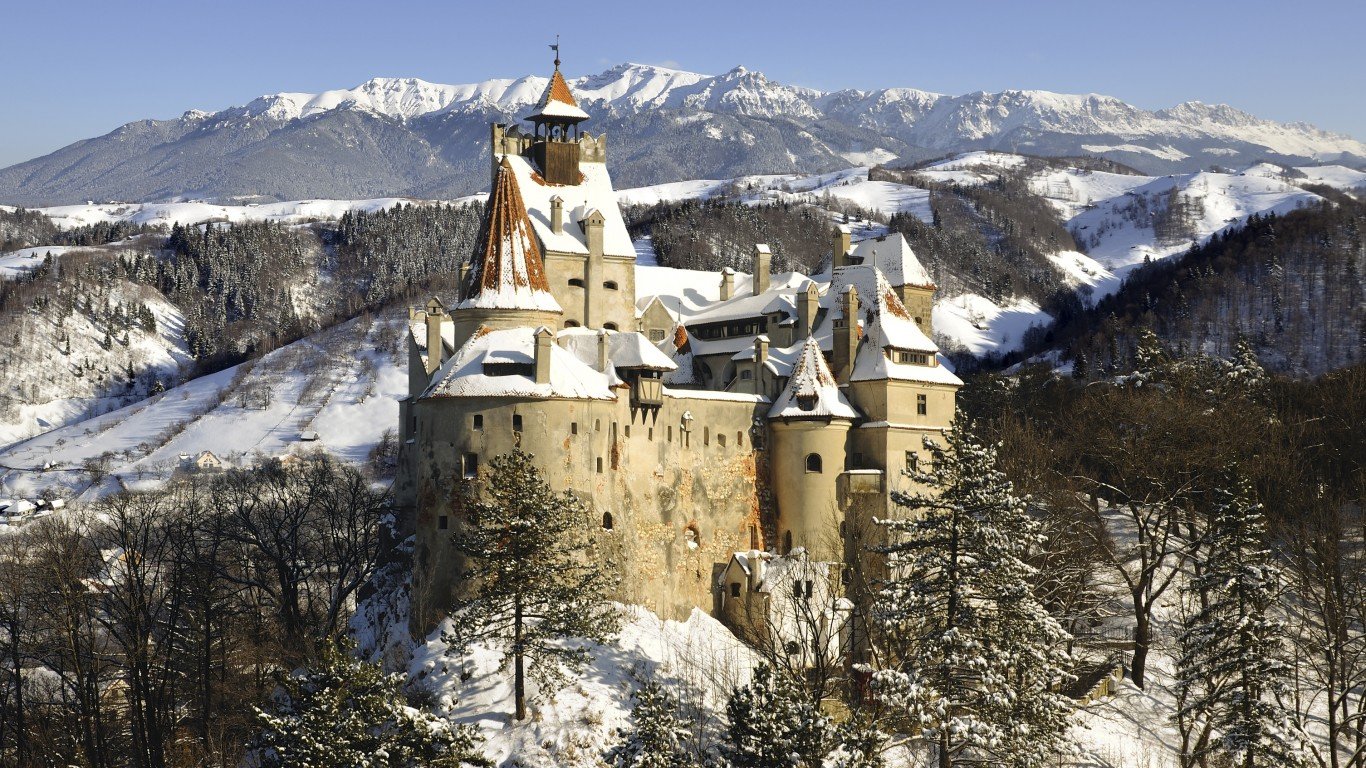
Bran Castle
> Location: Bran, Romania
This Transylvanian castle is rumored to be the inspiration behind Dracula’s Castle in Bram Stoker’s novel “Dracula.” Although Vlad the Impaler – commonly thought to be the inspiration for Count Dracula – likely never stepped foot in the castle, local myths in the surrounding villages tell of spirits who walk as humans during the day but torment and haunt villagers at night.
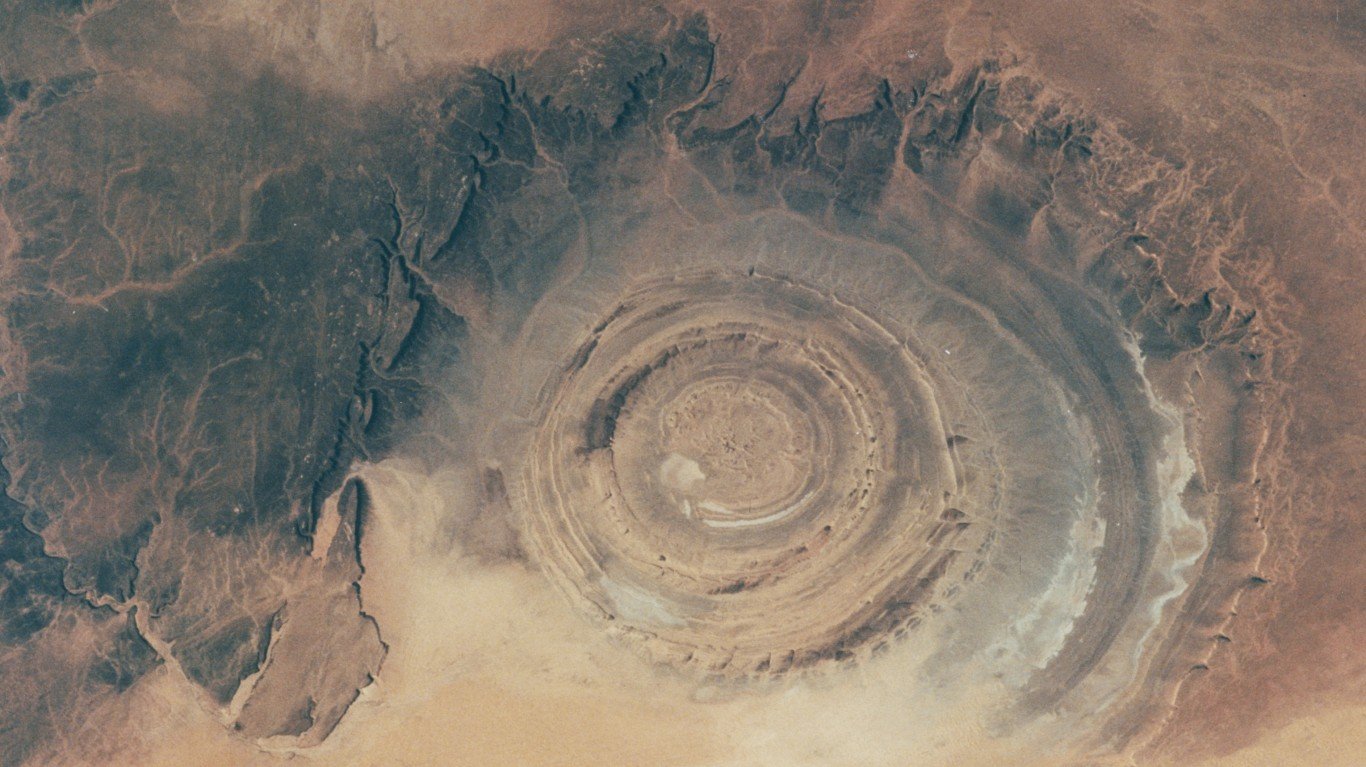
Richat Structure
> Location: Adrar Plateau, Mauritania
Also known as the Eye of the Sahara, the Richat Structure is visible from space and was first thought to be an impact crater when it was observed from space by astronauts in the ’60s. Resembling a huge bullseye, the formation is actually an eroded geological dome that is 25 miles in diameter and contains rocks that are 100 million years old.
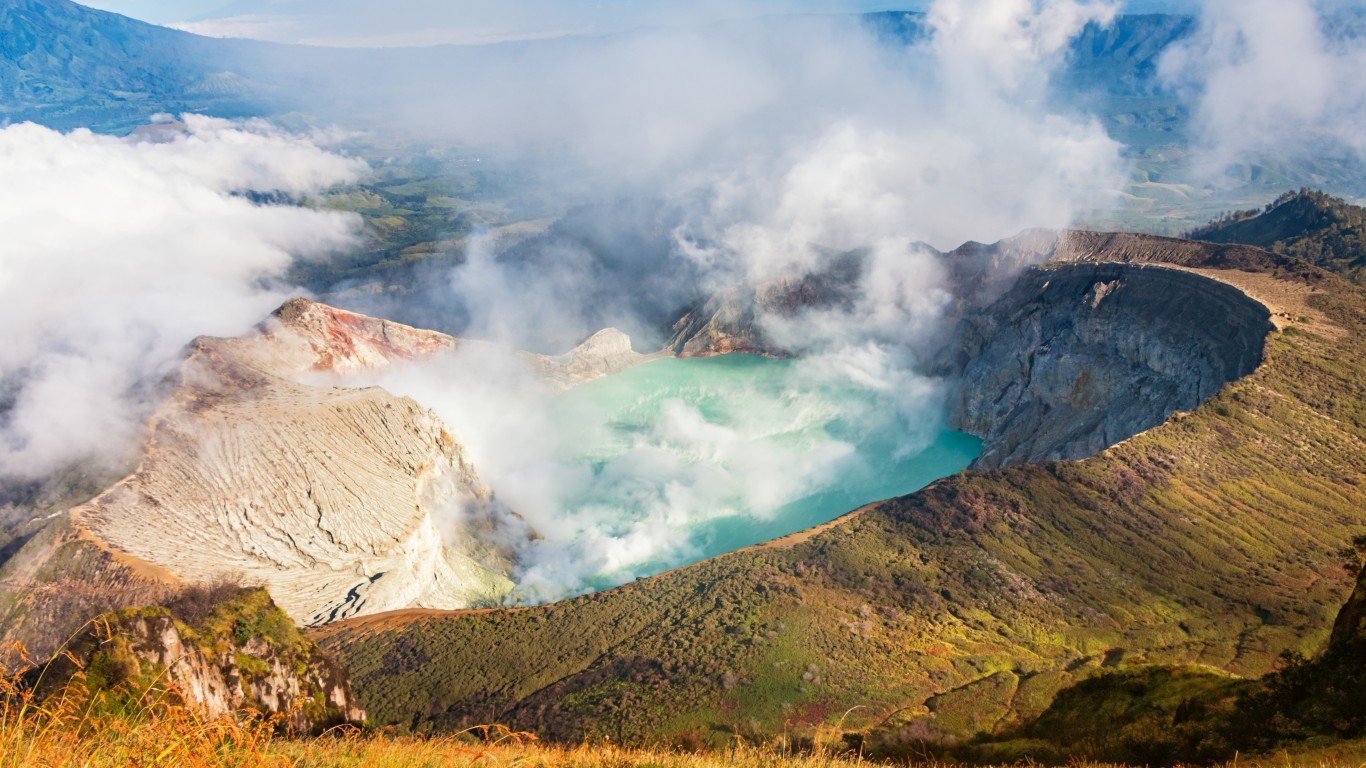
Kawah Ijen Lake
> Location: Between Banyuwangi and Bondowoso regencies, Indonesia
The largest acid lake in the world, Kawah Ijen Lake is a bright turquoise caldera lake in a volcanic crater on the island of Java. Sulfurous volcanic gasses rise from vents around the lake and often ignite as they hit oxygen, causing an eerie scene at night, when electric blue flames can be seen glowing in the fog.
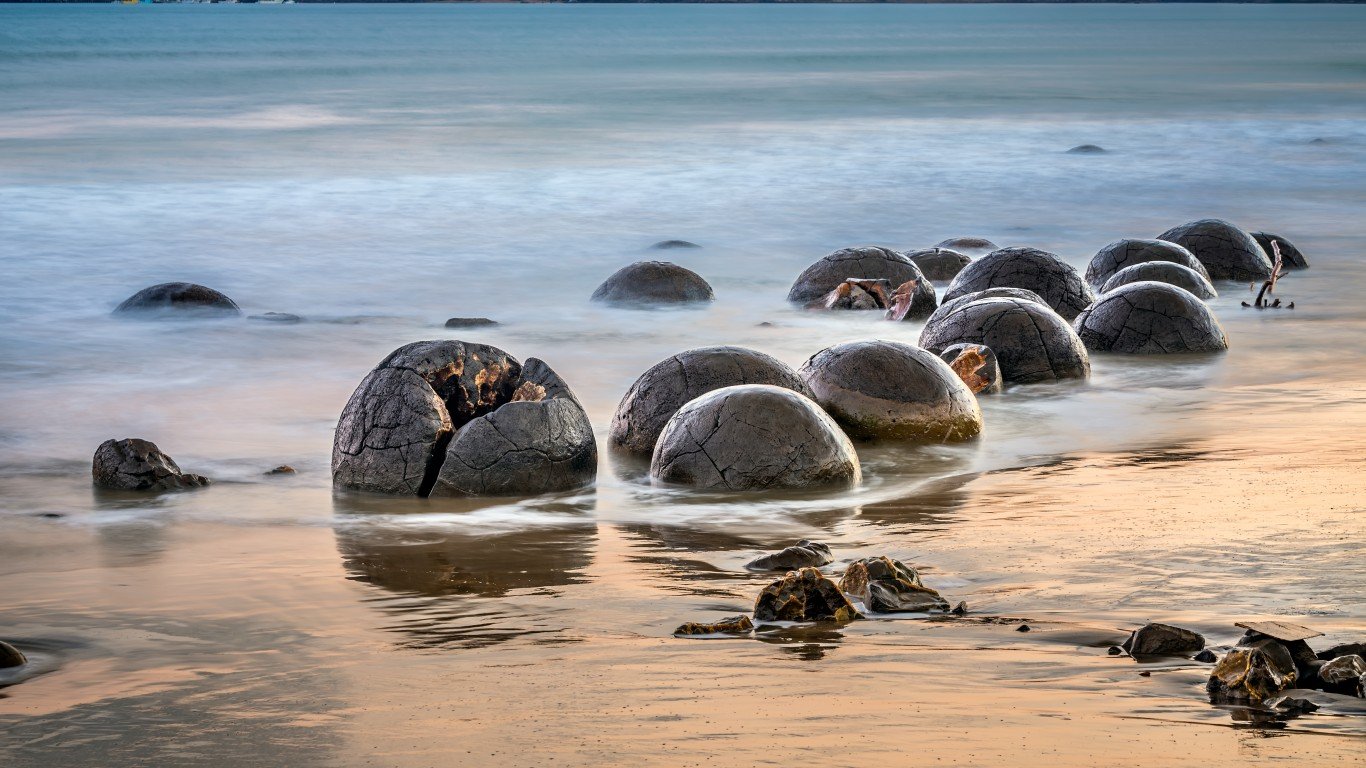
Moeraki Boulders
> Location: Between Moeraki and Hampden, New Zealand
These oddly spherical boulders dot a section of the Koekohe Beach on the Otago Coast of New Zealand’s South Island, where they have emerged from eroding mudstone cliffs. Formed by calcite deposits that slowly built up around a central nucleus, the round concretions have cracked exteriors filled with mineral deposits, which give them the illusion of being large dinosaur eggs. Māori legend dictates that they are remnants of food and baskets that washed ashore from the wreck of a canoe that carried some of their ancestors to the islands.
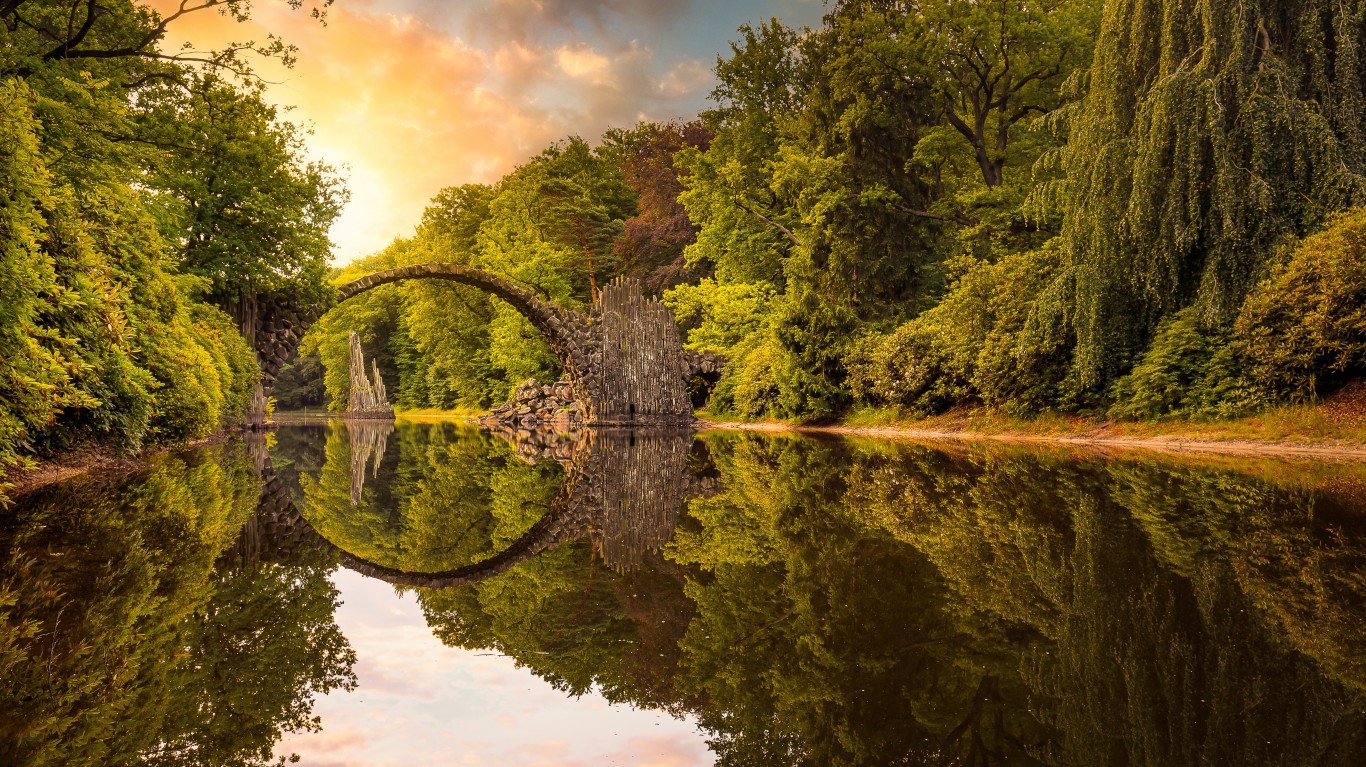
Rakotzbrücke
> Location: Gablenz, Germany
Commissioned in 1860, Rakotzbrücke is a half-circle bridge built as an aesthetic monument rather than a functional structure. It is also called Teufelsbrücke, or Devil’s Bridge, because its design makes it incredibly dangerous to cross. The bridge’s reflection in the water beneath it appears to form a full circle, and local stones shaped like basalt columns decorate the ends of the walkways.





